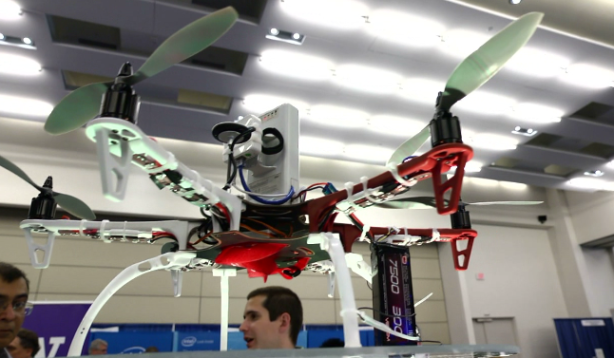
In disaster response and humanitarian crisis situations, communication is crucial. The ability to communicate effectively can save lives and assist in recovery efforts. One emerging technology that could potentially improve communication capabilities in such situations is airborne WiFi platforms. These platforms use unmanned aerial vehicles (UAVs) or drones to provide high-speed internet access to affected areas. In this article, we will discuss the advantages and disadvantages of using airborne WiFi platforms in disaster response and humanitarian crisis situations.
Pros
Rapid deployment: One of the biggest advantages of airborne WiFi platforms is their ability to be rapidly deployed. UAVs can be launched quickly and flown to an affected area, providing internet access to first responders and aid workers. This can significantly improve communication capabilities in areas where traditional infrastructure has been damaged or destroyed.
Wide coverage area: Airborne WiFi platforms can cover a large area, providing internet access to a wide range of users. This can be especially useful in disaster response situations where traditional communication infrastructure has been compromised.
Scalability: Airborne WiFi platforms can be scaled up or down depending on the situation’s needs. Multiple drones can be launched to provide greater coverage and bandwidth if required.
Cost-effective: Compared to traditional communication infrastructure, airborne WiFi platforms can be a cost-effective solution. In many cases, it may be less expensive to deploy drones than to rebuild or repair traditional infrastructure.
Redundancy: Airborne WiFi platforms can provide a redundant communication system in areas where traditional infrastructure has been damaged or destroyed. This can help ensure that critical communication channels remain open in emergencies.
Cons
Limited battery life: One of the biggest challenges of airborne WiFi platforms is their limited battery life. Depending on the drone and flying conditions, the battery may only last for a few hours. This means that drones must be flown in shifts or replaced frequently.
Weather conditions: Adverse weather conditions can impact the ability of drones to fly and provide WiFi access. High winds, rain, and other weather conditions can make it difficult or impossible for drones to fly, which can limit their effectiveness in disaster response situations.
Interference: Interference from other devices can affect the quality of the WiFi signal provided by airborne platforms. In densely populated areas or areas with a lot of radio frequency interference, the signal’s quality may be reduced.
Limited bandwidth: While airborne WiFi platforms can provide high-speed internet access, the available bandwidth may be limited. This can affect the number of users who can access the network and the types of data that can be transmitted.
Regulatory challenges: The use of drones for communication purposes can be subject to regulatory challenges. In some areas, the use of drones for commercial purposes is restricted or prohibited.
Backhaul challenge: Another significant challenge associated with airborne WiFi platforms is the backhaul. Backhaul refers to the link that connects the drone to the internet. In many cases, the backhaul link can be a bottleneck and limit the amount of data that can be transmitted.
Conclusion
Airborne WiFi platforms have the potential to improve communication capabilities in disaster response and humanitarian crisis situations. However, they face several challenges, including limited battery life, weather conditions, interference, limited bandwidth, regulatory challenges, and the backhaul challenge. While these platforms show promise, there is still a long way to go before they can be effectively deployed in real-world situations. Further research and development are needed to address these challenges and maximize the potential of airborne WiFi platforms.
References:
- Goldstein, D. (2018, August 7). Dronelogics CEO David Goldstein speaks at New York State Association of Fire Chiefs Conference. Retrieved from https://dronelogics.com/news/dronelogics-ceo-david-goldstein-speaks-at-new-york-state-association-of-fire-chiefs-conference/
- Johnson, N. (2020, September 9). A Brief History of Drones and Their Impact on Society. Retrieved from https://dronelife.com/2020/09/09/a-brief-history-of-drones-and-their-impact-on-society/
- Wynne, B. (2018, February 22). How Drones Are Changing the World. Retrieved from https://www.thoughtco.com/how-drones-are-changing-the-world-373385